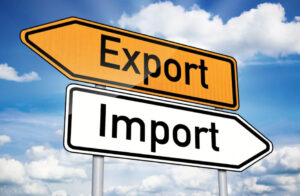
In January-May 2025, Ukraine imported zinc and zinc products worth $21.319 million, down 8.1% compared to the same period in 2024. In May, imports amounted to $6.237 million.
Exports of zinc products increased to $523 thousand against $84 thousand in the first five months of 2024. In May 2025, $113 thousand were exported.
In 2024, zinc imports reached $58.610 million (+27.5% compared to 2023), while exports amounted to $563 thousand. In 2023, imports were $45.966 million and exports were $130 thousand.

Imports of tractors to Ukraine in January-May 2025 amounted to $355.9 million, which is 3.8% less than in the same period in 2024, according to statistics from the State Customs Service.
According to the published statistics, tractors were mainly imported from the United States (19.7% of total imports of this equipment, or $70.1 million), Germany (17.3% or $61.4 million) and China (17.2% or $61.3 million), while a year earlier it was Germany ($59.7 million), the Netherlands ($53.6 million) and China ($44.2 million).
In May of this year, imports of tractors decreased by 10% to $60.2 million by May 2024, which is also 29% less than the volume of imports in April of this year.
According to statistics, only $2.5 million worth of tractors were exported in the first five months of this year, mostly to Romania, Zambia and Germany.
As reported, imports of tractors to Ukraine in 2024 amounted to almost $784 million, which is 5.6% less than a year earlier, while exports amounted to $5.44 million against $5.74 million.

According to the State Customs Service, in the first five months of 2025, imports of electric batteries and separators to Ukraine increased 2.3 times to $382.7 million. The main suppliers are China (76%), Taiwan (5.8%) and Vietnam (4.3%).
In May, imports of batteries amounted to $94.4 million, which is 92% more than in May 2024 and 34% more than in April. In particular, $14.8 million of products were imported from Vietnam, while for the entire 5 months – $16.5 million.
Exports of Ukrainian batteries amounted to $20.7 million, with the main destinations being Poland (29.4%), France (14.5%) and Germany (11.8%).
As a reminder, since the end of July 2024, Ukraine has exempted imports of electric generators and batteries from customs duties and VAT. In 2024, imports of generators reached $732.5 million (+3.7% compared to 2023), and imports of batteries reached $950.6 million (twice as much as in 2023).

In January-May 2025, Ukraine imported lead and lead products worth $3.413 million, which is 8.1 times more than in the same period in 2024. In May, imports amounted to $644 thousand.
At the same time, exports of lead products decreased by 16.1% to $3.638 million (in May – $679 thousand).
In 2024, Ukraine increased lead imports by 2.4 times to $2.391 million, while exports decreased by 22.9% to $11.401 million. For comparison: in 2023, imports amounted to $989 thousand, and exports – $14.778 million.

In January-May 2025, imports of power generating sets and rotating electrical converters (UKTZED 8502) increased 7.5 times in monetary terms compared to the same period in 2024, to $632.2 million, according to the State Customs Service of Ukraine.
Most of these devices were imported from the Czech Republic ($120 million, or 19% of the total), Austria ($88.7 million, or 14%), and the United States ($78.8 million, or 12.5%). Last year, the main suppliers were China, the Czech Republic, and Austria.
In May 2025, imports increased 11 times by May 2024, and by 39.3% by April 2025 to $115.7 million.
Exports of generators remained insignificant at $2 million over five months, mainly to Latvia, Bulgaria, and Turkey.

In January-May 2025, Ukrainian companies increased imports of copper and copper products by 20% compared to the same period last year, to $77.971 million. This is evidenced by the data of the State Customs Service of Ukraine.
Copper exports also increased by 17.8% to $38.762 million over the same period. In May, the volume of imports amounted to $16.245 million, and exports – $9.635 million.
For comparison, in 2024, the volume of copper imports remained virtually unchanged compared to 2023 and amounted to $140.797 million. At the same time, exports increased by 22.4% to $88.237 million.
In 2023, despite the war, Ukraine doubled its copper imports to $140.795 million (+120% yoy), while exports decreased by 20.1% to $72.078 million. The upward trend in copper trade in 2025 indicates a recovery in demand for the metal from both the domestic market and foreign buyers.
Copper is widely used in electrical engineering, pipe manufacturing, alloys, medicine and other industries.
imports, exports, copper